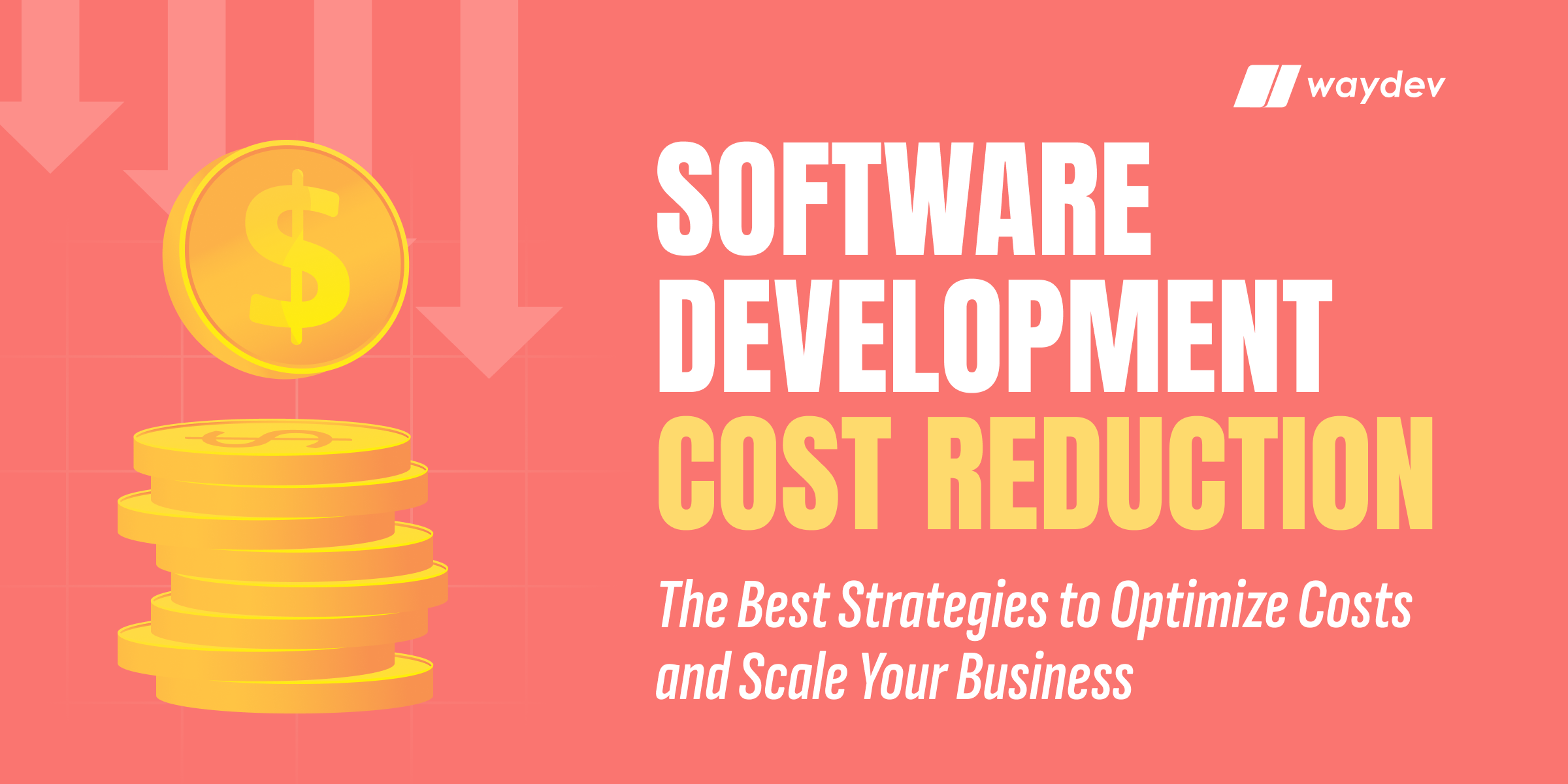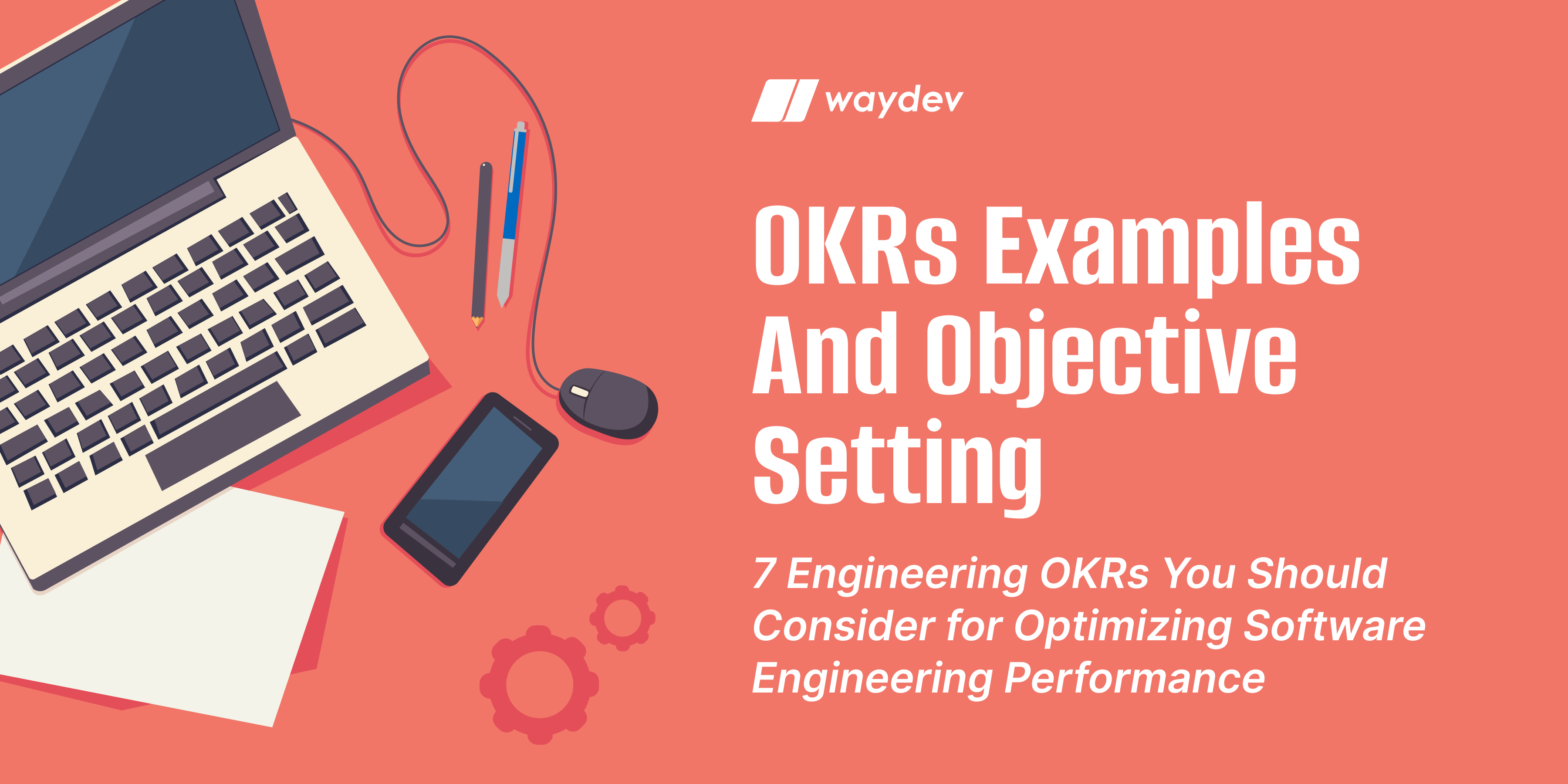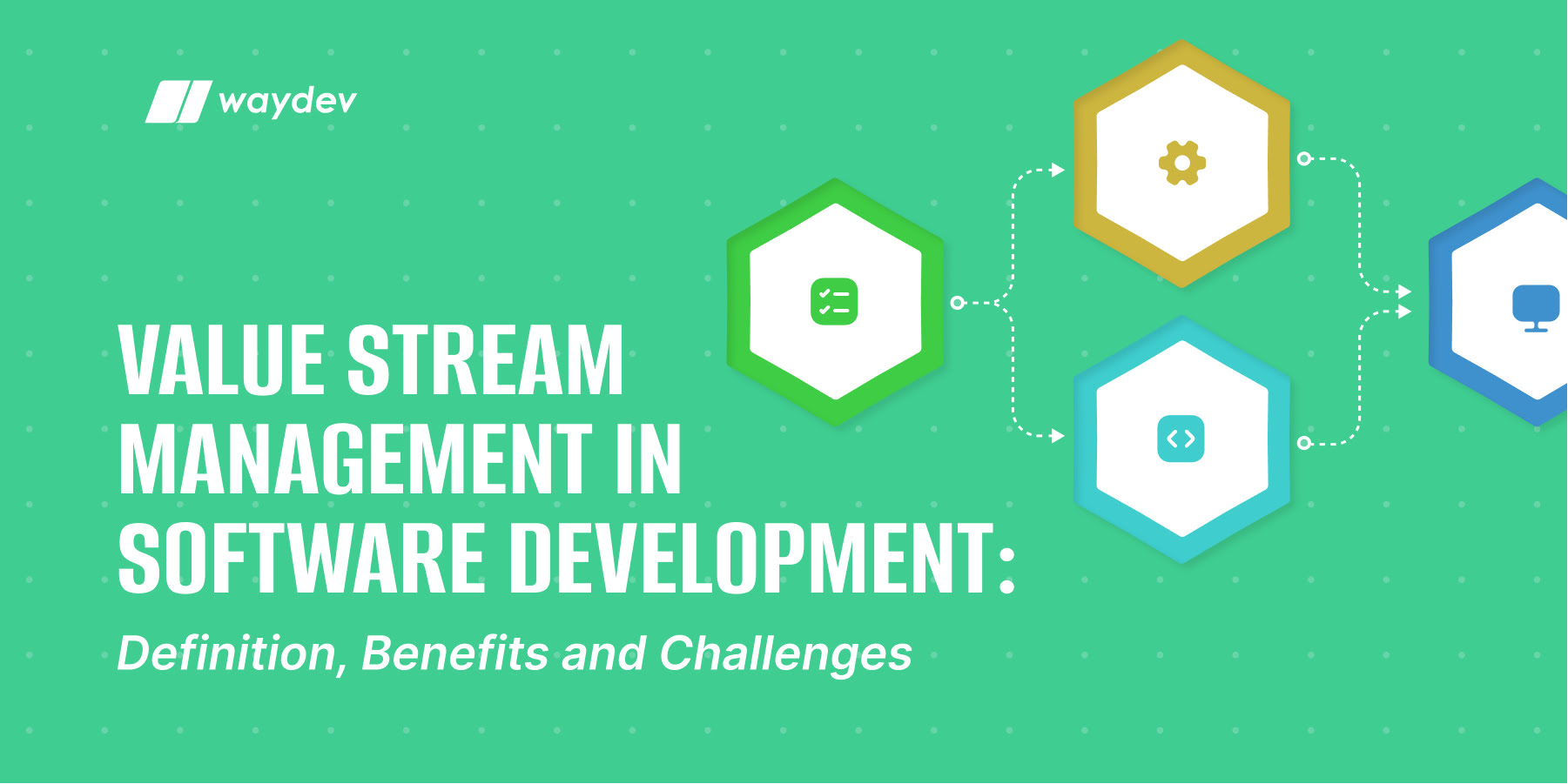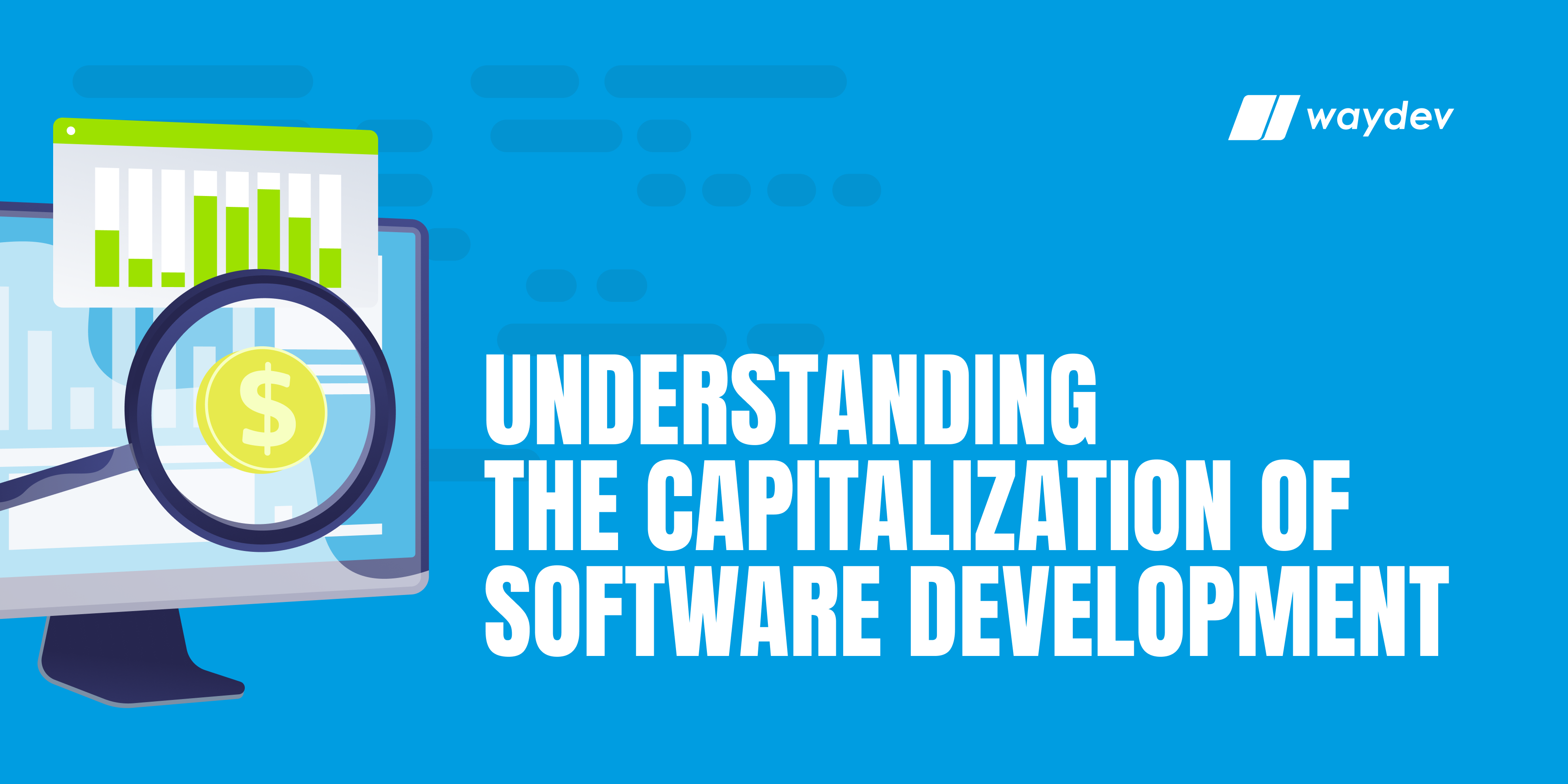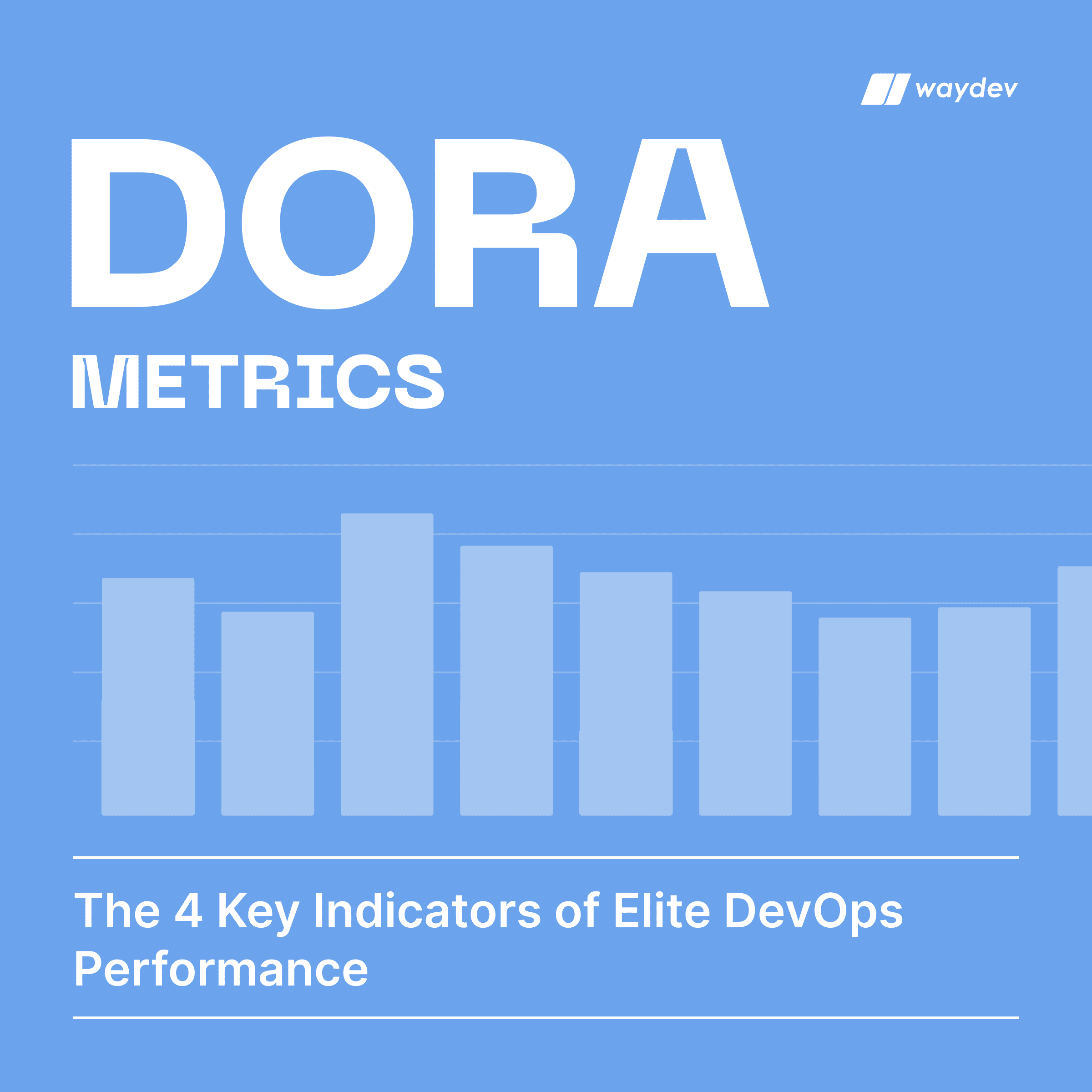The tech industry is very competitive, with trends changing and new developments always emerging. From a business standpoint, keeping yourself competitive on this market is not an easy task, and it implies joggling many aspects. One crucial element is understanding how software development costs affect your business.
Developing quality software that represents added value for your customers implies complex processes, most of which are impacted by financial aspects. Understanding software costs and how they impact your business is crucial for resource planning, reducing waste, making data-based decisions, and overall software project planning.
Waydev is an intelligence platform that provides metrics and data analysis for effectively planning and reducing your costs related to software development processes. By using our comprehensive dashboards, you can keep track of projects’ delivery and progress and see how they align with your business goals and KPIs.
The Factors That Affect Software Development Costs
There are many factors to consider when analyzing software development costs, depending on the project requirements and scope, human resources and tools needed, and the project timeline. When discussing costs involved with developing new software, having an overview of the main areas that can influence them can help you make better financial decisions and get a better ROI for your business.
Here is a list of the main factors that affect software development costs:
1. Technical Complexity and Requirements
Estimating the costs of the delivery processes depends a great deal on the technical complexity and requirements of the project – think tools, automation and testing, workflow-aiding platforms, outsourcing certain tasks, and more time and resources spent overall. It’s about understanding the complexity of your current project and the allocation of resources needed to follow it through. A higher complexity rate can also mean higher risks associated with the delivery processes, so estimating costs and doing thorough risk management are key to a successful outcome.
2. Project Scope and Scale
Not all projects are made the same, which greatly impacts the end of software development costs. What this means is that projects are very different in terms of scope (maybe you want to change an entire infrastructure or just add new features) and scale (we could be talking about intricate bodies of work that go on for months or smaller workpieces that get resolved in a 2-3 week sprint). The costs involved with each of these situations are very different, as they require different resources, efforts, and time to get done.
3. Development Methodology and Processes
When it comes to software development, there is no one-size-fits-all approach to delivering software. Depending on the particularities of tech organizations or individual projects, some choose more classical or more modern processes to fit their needs and requirements. Significant differences exist between the more traditional approaches, such as the Waterfall methodology, and the newer Agile or DevOps model, where the focus falls on a more dynamic and collaborative environment. Choosing the right approach is an essential part of tech leads’ responsibilities, as this can have an incremental impact on project costs and how resources are allocated (or wasted, in a worst-case scenario).
4. Team Composition and Skill Level
Many different skills are needed for the variety of project requirements, depending on the scope and methodologies used. Not all engineers can step in and resolve every work batch, so you need to go to the right people and invest in constant training to keep up with emerging technologies. Sometimes you may find the need to outsource certain tasks that your engineering teams may not have the skills for – the costs involved have to be considered as they will impact the overall project costs.
5. Timeframe and Deadlines
Making a good prediction of the timeframe required to complete projects is a crucial part of planning costs. When deadlines are not met, more time and resources allocated to those projects will raise the overall software development costs. When this happens constantly, it may be a cue that the planning was off, or there are bottlenecks in the delivery process holding back the project’s completion.
Engineering teams need skills to resolve their tasks and come up with innovative solutions. But they also require tools to assist them in completing their work – the right ones should make their job easier and not pose any technical difficulties. The infrastructure and tooling requirements will influence the production costs, as tech executives need to invest in testing devices, software licenses, cloud services, servers, or development environments.
What Are the Hidden Costs of Software Development?
Besides the more upfront or obvious costs associated with the software delivery process, other factors influence the overall cost of each project. Even though these wouldn’t be the obvious choices, these elements can still drag your ROI down and hinder your company’s financial success. Mitigating these costs and taking them into account when doing project planning is key to keeping the budget in check.
Here is a list of some hidden elements that impact your average costs of software development:
1. Maintenance and Support Costs
It’s not always just about developing software but also about keeping it upgraded over time and ensuring user support (with comprehensive documentation, user manuals, e-books, and training materials). As technology evolves, you need to change integrations or solve compatibility issues with new systems or platforms. Maintenance also implies constantly updating security software and reducing vulnerabilities.
2. Integration and Compatibility Expenses
In the software delivery process, you need to consider the necessary resources for integration with external services, databases, and other platforms and test that they are compatible and run smoothly. This will influence your overall average costs, so it’s essential to consider them when project planning to mitigate challenges with integrations and compatibility issues.
3. Technical Debt and Rework Costs
Another pitfall that influences your average costs of software development is related to rework. Rework refers to fixing the existing code that fails or results in downtime. But this also implies creating technical debt that’s a temporary solution – even though it doesn’t need immediate fixing, it will eventually take a toll on progressing your work. The downtime itself, allocating additional time and resources to fixing already written code, and testing result in hidden costs for the software delivery process.
4. Training and Knowledge Transfer Expenditures
Your engineering teams will need additional training and growth opportunities, especially with new technologies or new tools introduced to their daily practices. This requires time and resources to integrate them with their processes, so hidden costs will be associated with the learning curve.
5. Upgrades and Scalability Investments
Growth and expansion are significant for your software projects, but they also imply additional costs that may not be apparent in the project’s beginning. Scaling can be very useful as customer demands grow in order to handle the expanding infrastructure needed.
6. Security and Compliance Expenses
System security is a crucial part of a tech organization’s processes because vulnerabilities in this area can cause immense damage. Keeping your security level high entails doing constant audits, addressing vulnerabilities, and implementing additional security measures where needed can all result in additional costs. Another issue to consider when assessing hidden costs is regulatory compliance – as industry regulations change, you need audits and implementing changes to align.
The Best Strategies to Reduce Software Development Costs
1. Effective Planning and Requirement Gathering
When starting a software project, efficient planning based on realistic predictions is key for cost control. Implementing practices like clear project scope from the beginning means avoiding unplanned costs and financial pitfalls. An early and thorough analysis of the necessary project requirements can also prevent many issues and ensure smooth sailing when starting a new software project.
2. Agile Development Practices and Iterative Approaches
A more flexible software development approach, such as agile, can provide better usage of resources and reduce waste. Scrum or Kanban focuses on iterative development and continuous feedback that helps identify and fix issues early on. The agile model can promote reduced costs due to its dynamic and flexible approach.
3. Leveraging Open-Source Software and Existing Technologies
Software licensing fees can prove expensive, so leveraging free or low-cost open-source software is a great strategy to lower your overall delivery costs. As long as there are no compatibility or security issues, you don’t always have to use expensive licensed products or build your own. At the same time, new technologies can be costly and hinder your productivity because of training and the necessary learning curve, so try using existing technologies to reduce costs and delivery time if this doesn’t inhibit progress.
4. Outsourcing or Offshoring Development
Outsourcing or offshoring work may be a great idea when you need different expertise that you have in-house and want to take advantage of lower prices in other regions. You can maintain quality standards while leveraging opportunities in other countries while reducing the standard costs that come with regular employment fees.
5. Automation and Continuous Integration
Using automation and continuous integration within your standard practices greatly increases productivity while reducing resource waste and software development costs. Detecting issues early on and being able to fix them quickly provides many benefits to the delivery processes. Automated tests ensure better detection of bugs and less downtime – which results in wasted resources and time for fixing problems while customers get more and more frustrated.
6. Code Reuse and Modularization
Reusing code is an effective strategy to reduce software expenses, allowing engineers to leverage existing components or code modules. Remember that these are already tried and tested workpieces, so you get both quality and velocity and reduced resource spending. Having coding standards and maintaining a well-organized database is key for successfully leveraging code reuse and modularization and reducing costs.
7. Infrastructure Cost Optimization
Implementing infrastructure cost optimization within your organization can reduce software costs and scale your business. You can adapt your infrastructure and resources, such as storage or servers, to match the specific needs of each software project. Use automation and monitoring tools to optimize your costs and delivery processes and reduce resource waste.
8. Quality Assurance and Testing Processes
Automated testing and careful monitoring of your projects can greatly impact your software delivery’s general costs. By implementing strategies such as test automation and continuous integration, you can achieve early defect detection that prevents many issues and roadblocks.
9. Project Management Best Practices
Implementing project management best practices is always a good idea when you want great results fast, with as little resource waste as possible. Effective financial strategies start with planning, managing, and monitoring how your projects are unveiled, so you can make the necessary changes along the way.
Balancing Cost Reduction with Quality and Long-term Success
Cost optimization is a critical aspect of successful tech companies in order to use your resources wisely and have a profitable business. While reducing costs and having a healthy financial situation is important, you should be aware of its biggest pitfall – sacrificing quality for cost reduction. Cutting corners to get faster output for less money will take its toll eventually when software products don’t have the high quality your customers expect from you. In a very competitive market, customers have plenty of other choices if your products don’t meet their needs, so keeping high standards and always having customer satisfaction to guide you is key. Maintaining the right balance between reducing costs and quality requires skilled project planning, prioritizing, and continuous assessment and improvement.
Cost reduction is a very appealing concept for maximizing profits and scaling businesses. Still, there are a number of pitfalls to take into consideration when trying to implement cost-reduction strategies. Here are some potential pitfalls:
- Offshoring can be a successful cost-reduction strategy, but think about what you’re trading for a lower salary. Do the engineers that you’re outsourcing work have the necessary skill level? Are you paying them by hours or by results?
- Measuring the actual cost savings from implementing these strategies is no easy task. Sometimes you can’t understand if your strategies worked because the savings are not so obvious on a short-term level. Using the right metrics and tools like Waydev can give you better data over time.
- Hidden costs – not considering them and unplanned work and issues- can pose problems with cost reduction strategies.
How Can Waydev Help You Reduce Software Development Costs?
Waydev is a software development analytics platform that can help you optimize software development processes and reduce costs in several ways:
1. Codebase Insights: Waydev provides detailed analytics and insights into your codebase, helping you identify areas where development efforts may be inefficient or code quality can be improved. By analyzing codebase metrics such as commit frequency, code churn, and code complexity, Waydev can highlight potential bottlenecks, areas of high rework, or code that may need refactoring. This helps you prioritize and allocate development resources more effectively, reducing unnecessary development efforts and costs.
2. Team Performance Metrics: Waydev tracks and analyzes individual and team performance metrics, such as lines of code, commits, and code review activity. By having visibility into how your development team is performing, you can identify areas where productivity can be enhanced, optimize resource allocation, and identify potential training needs. This can lead to more efficient development processes and reduced costs associated with low productivity or misallocation of resources.
3. Pull Request Analysis: Waydev offers detailed insights into pull request activity, including review duration, reviewer feedback, and pull request size. This allows you to identify bottlenecks in the code review process, optimize collaboration, and ensure that pull requests are processed efficiently. Efficient and effective code reviews can prevent the introduction of bugs and reduce the cost of fixing issues later in the development cycle.
4. Time Tracking and Estimation: Waydev enables you to track time spent on various development activities and provides insights into estimated versus actual time spent on tasks. This can help you better assess project timelines, identify inefficiency or scope creep areas, and make informed decisions to optimize resource allocation and reduce costs associated with inaccurate estimations or prolonged development timelines.
5. Customizable Dashboards and Reports: Waydev allows you to create customized dashboards and reports to track the metrics and KPIs that are most relevant to your organization. By clearly visualizing key development metrics, you can monitor progress, identify trends, and make data-driven decisions to improve efficiency and reduce costs.
Scale Your Business With Software Costs Reduction Strategies
Understanding how to plan and manage software development costs is key to your organization’s financial success and driving your business forward. Implementing strategies such as efficient resource allocation, project scoping and planning, risk management, and managing stakeholders’ expectations can keep your delivery costs low.
Waydev is a great tool for managing your costs and making financial decisions based on solid collected data. With our comprehensive metrics, such as PR analysis, code complexity, and performance-related metrics, you will have all the information to plan better and adjust your project costs.
Contact us today to see how we can help you reduce your software development costs and scale your business.
